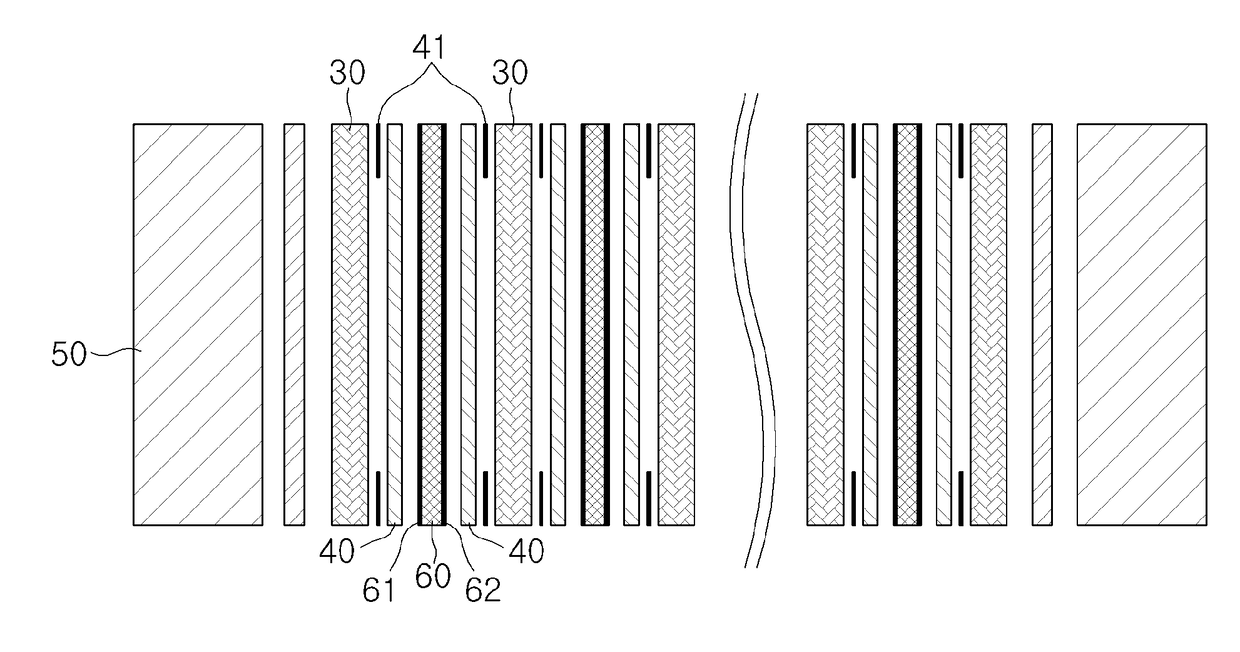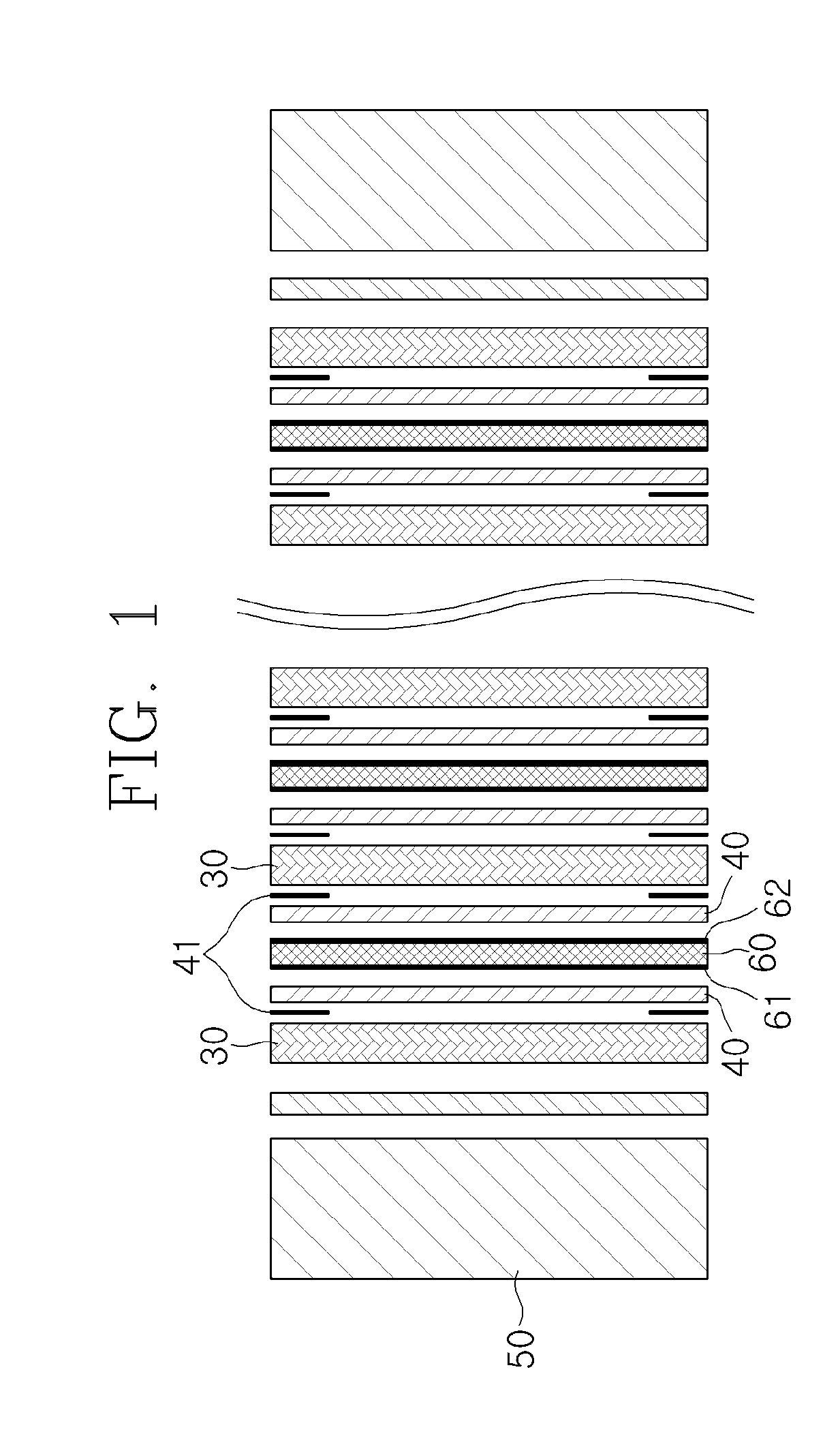Composite Material Separation Plate for Fuel Cell and Method for Manufacturing Same
a technology of fuel cell and composite material, which is applied in the direction of sustainable manufacturing/processing, final product manufacturing, electrochemical generators, etc., can solve the problems of low electric contact resistance between two adjacent separation plates and damage to carbon materials forming separation plates b>30/b>, so as to reduce the electric contact resistance of separation plates
- Summary
- Abstract
- Description
- Claims
- Application Information
AI Technical Summary
Benefits of technology
Problems solved by technology
Method used
Image
Examples
first embodiment
[0110]Since the process for manufacturing the preliminary separation plate is the same as the process described in the first embodiment, a separation plate manufacturing process in which regions having different electric contact resistance are formed in the separation plate by using the sacrificial layer will now be primarily described.
[0111]Referring to FIGS. 4 to 6B, in the process for manufacturing a composite material separation plate for a fuel cell according to the second embodiment of the present invention, when the preliminary separation plate 170 is completed, a second trimming machine 300 enters the preliminary separation plate 170 as described in the first embodiment of the present invention.
[0112]The second trimming machine 300 includes a third table 302, a third ram 304, and a second trimming mold assembly 330. The second trimming mold assembly 330 includes a second trimming lower mold 312 and a second trimming upper mold 314 that are seated on the third table 302.
[0113...
second embodiment
[0118]That is, in the present invention, the sacrificial layer 380 is formed only in a region corresponding to the first region 324a of the second trimming upper mold 314 or has a rectangular plate shaped sheet structure corresponding to the first region 324a.
[0119]The material of the sacrificial layer 380 has the characteristic described in the first embodiment and may adopt a polymer resin such as polyethylene or polypropylene, an elastomer such as silicone or rubber, or a polytetrafluoroethylene (PTFE) film or a silicon sheet.
[0120]When the preliminary separation plate 170 and the sacrificial layer 380 are disposed in the second trimming lower mold 312 as described above, the second trimming machine 300 is operated to perform the consolidation and curing processes of the second trimming upper mold 314 of the second trimming mold assembly 330 toward the second trimming lower mold 312.
[0121]The process of consolidating the sacrificial layer 380 may be performed by pressing the sec...
PUM
| Property | Measurement | Unit |
|---|---|---|
| temperature | aaaaa | aaaaa |
| radius | aaaaa | aaaaa |
| conductive | aaaaa | aaaaa |
Abstract
Description
Claims
Application Information
 Login to View More
Login to View More - R&D
- Intellectual Property
- Life Sciences
- Materials
- Tech Scout
- Unparalleled Data Quality
- Higher Quality Content
- 60% Fewer Hallucinations
Browse by: Latest US Patents, China's latest patents, Technical Efficacy Thesaurus, Application Domain, Technology Topic, Popular Technical Reports.
© 2025 PatSnap. All rights reserved.Legal|Privacy policy|Modern Slavery Act Transparency Statement|Sitemap|About US| Contact US: help@patsnap.com



